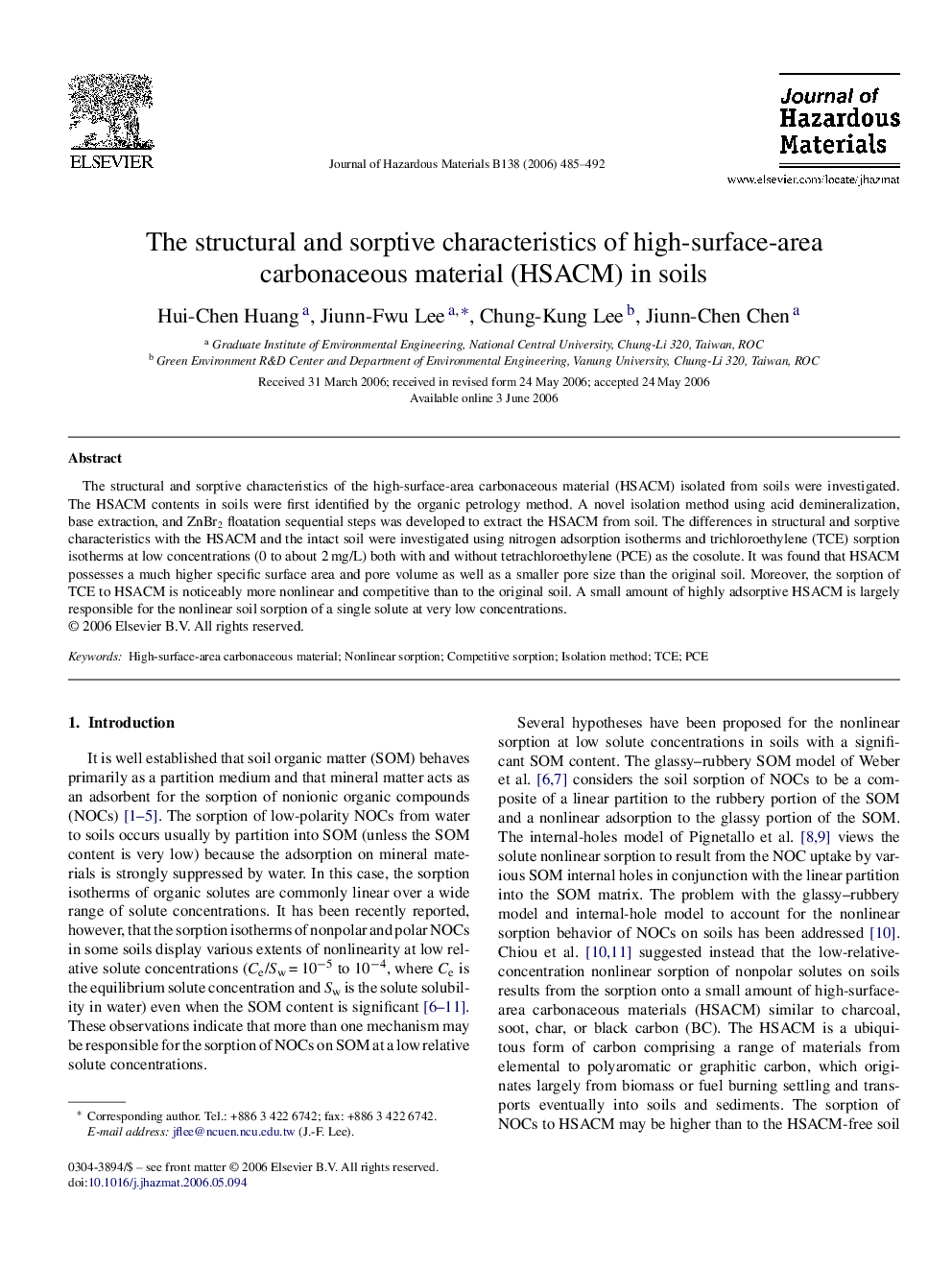| Article ID | Journal | Published Year | Pages | File Type |
|---|---|---|---|---|
| 585058 | Journal of Hazardous Materials | 2006 | 8 Pages |
Abstract
The structural and sorptive characteristics of the high-surface-area carbonaceous material (HSACM) isolated from soils were investigated. The HSACM contents in soils were first identified by the organic petrology method. A novel isolation method using acid demineralization, base extraction, and ZnBr2 floatation sequential steps was developed to extract the HSACM from soil. The differences in structural and sorptive characteristics with the HSACM and the intact soil were investigated using nitrogen adsorption isotherms and trichloroethylene (TCE) sorption isotherms at low concentrations (0 to about 2Â mg/L) both with and without tetrachloroethylene (PCE) as the cosolute. It was found that HSACM possesses a much higher specific surface area and pore volume as well as a smaller pore size than the original soil. Moreover, the sorption of TCE to HSACM is noticeably more nonlinear and competitive than to the original soil. A small amount of highly adsorptive HSACM is largely responsible for the nonlinear soil sorption of a single solute at very low concentrations.
Related Topics
Physical Sciences and Engineering
Chemical Engineering
Chemical Health and Safety
Authors
Hui-Chen Huang, Jiunn-Fwu Lee, Chung-Kung Lee, Jiunn-Chen Chen,
